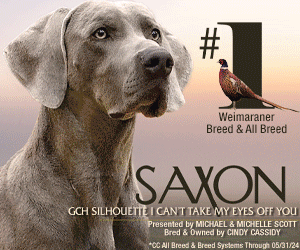The Berger Picard

photo by Lisa Croft-Elliott
by Amy Fernandez
The Berger Picard entered the Miscellaneous class on January 1, 2013. Although it’s new to the AKC ring, this is ancient breed has a long, fascinating history. The name is pronounced bare ZHAY pee CARR, and it it is alternatively known as the Picardy Shepherd, Berger de Picardie, or Chien de Berger. This dog is considered the oldest French herding breed, possessing the hallmark traits of the sturdy, rustic pastoral dogs that have been ubiquitous to Northern Europe for centuries. It stands 20-25 inches, weighs 50 to 70 pounds, with slightly rectangular proportions, an effortless, ground covering gait, tough compact, rounded feet, and a rough, shaggy, protective gray and fawn double coat.
One of the oldest French provinces, Picardie, takes its name from the Salian Frankish Picard tribe. These Germanic people settled the region in the fifth century. The name Picardie came into use in the 12th century to designate the vast territory where the Picard language was spoken. Extending from northeastern France to the Netherlands, this region became a center of Merongovian and Carolingian kingdoms. These major unifying dynasties emerged in fractured post-Roman Europe. Nineteenth century cynologists dated the Berger Picard’s origin to the ninth century. Opinions differ regarding its relationship to the Briard, Beauceron, and Belgian Sheepdogs. But Picardie ‘s robust agricultural economy created an unprecedented demand for versatile herding dogs throughout medieval Holland, France, and Belgium.
Many of these breeds have disappeared and the Berger Picard came close. Picardie was also the scene of bitter fighting during both World Wars. The breed neared extinction by the late 1940s. By then, its role in French culture well established, and this wasn’t confined to herding. Its popularity as a smuggling dog is well documented. Most breed histories mention tobacco smuggling, but nothing rivaled the profit potential of lace trafficking . Chantilly lace is more than a Big Bopper song. For centuries, France was a lacemaking center. Skyrocketing demand for this luxury product motivated plenty of ingenuity to evade exorbitant customs fees. Shaggy, medium-sized, pastoral dogs were ideal for the job. They were inconspicuous and easily carried 25 pounds of lace wound round their bodies and camouflaged by a false skin.
One official report noted the interception of 40,278 lace smuggling dogs between 1820-36. Despite efforts to halt the activity, it continued until machine-made lace killed the business in the late 19th century. By then, the Berger Picard was entering its next incarnation as a modern purebred.
It was first exhibited in May 1863 at the historic French Acclimation Society show in Paris. Classes were offered for every imaginable breed. Berger Picards were shown in a combined a class with Briards and Beaucerons. The first official standard was drafted in 1922, and it was recognized in France in 1925. After World War II, conservation breeding programs were organized to revive the breed and it was FCI recognized in 1964. It finally attained a foothold in North America thanks to internet communication. The Canadian Kennel Club accepted the breed in 1992. In 1994 it was UKC recognized, and it entered the AKC FSS program in 2007.
Berger Picards got a bit more facetime thanks to Because of Winn-Dixie, the 2005 film adaptation of the book by the same name. However, it remains rare. According to recent estimates, 3500 are registered in France, about 500 in Germany, and 300 in North America. AKC recognition will undoubtedly generate additional interest. The Berger Picard’s roguish appearance, playful demeanor, and irresistible smile have charmed dog lovers for centuries.
Short URL: http://caninechronicle.com/?p=14518
Comments are closed











